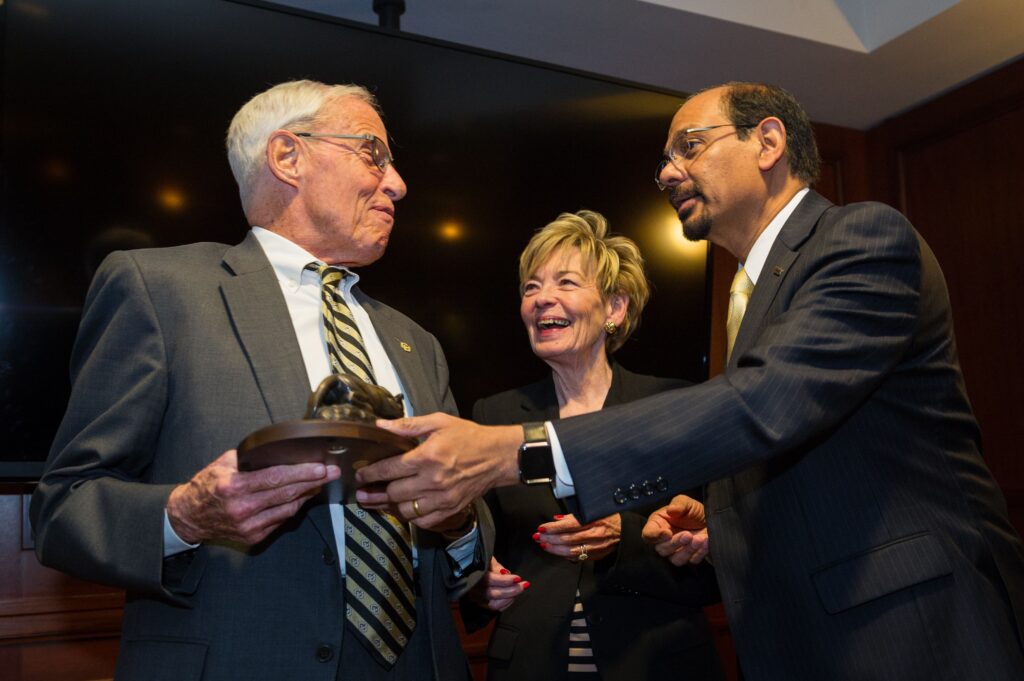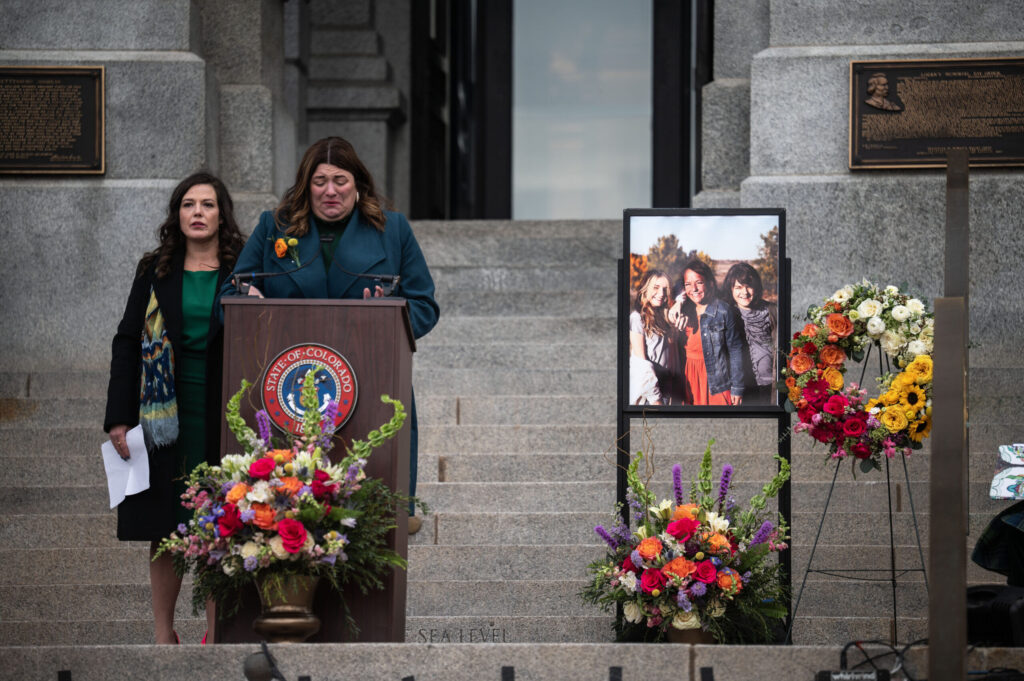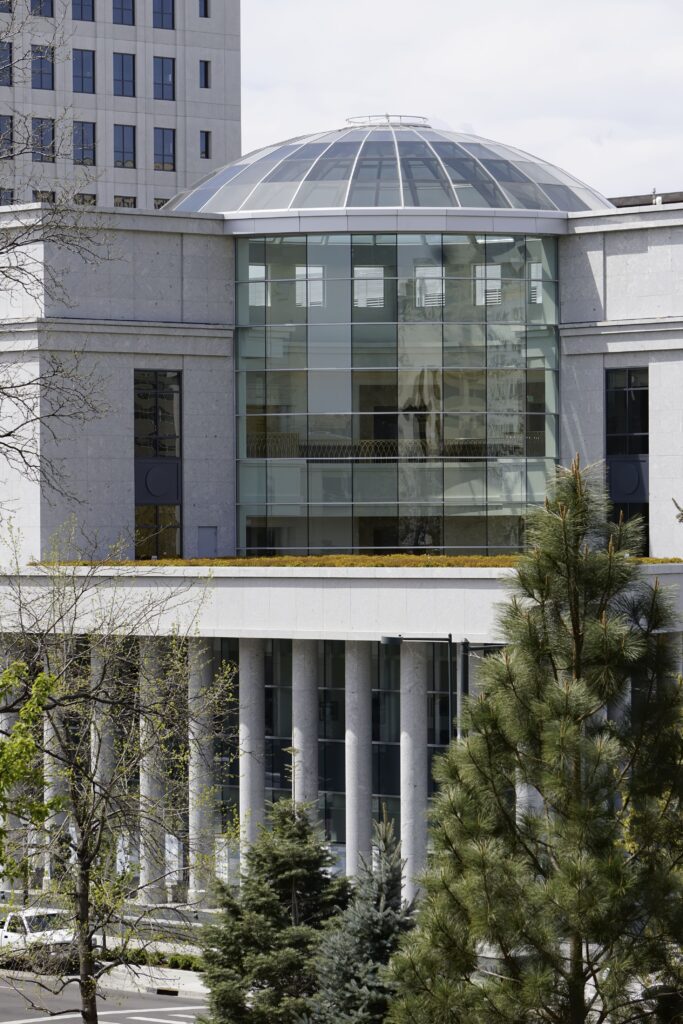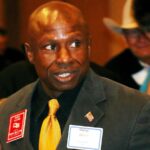New regional interest group Northwest Chamber Alliance buzzes the Capitol
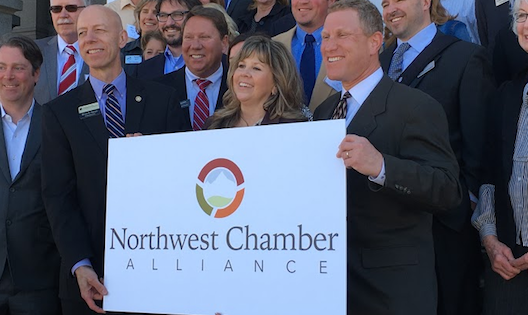
Amid the clamor at the Capitol over transportation funding priorities, a new coalition of northern Front Range business interests has formed to help make sure their concerns don’t fall to the wayside.
Leaders from the Northwest Chamber Alliance — the new legislative lobby group organized by the communities of Broomfield, Boulder and Longmont along with their local chambers of commerce — visited the Capitol last Wednesday to formally announce the collaboration and meet with the governor.
The group is pushing above all for progress on the B Line railway promised in the 2004 FasTracks plan. Construction stalled when the line from Denver hit Westminster, miles short of Broomfield. And for now FasTracks lists no definite completion date for the remaining section of the route, which would connect Westminster to Longmont via Boulder. FasTracks estimates at its website puts completion of the line will sometime between 2035 and 2044.
Discussion taken up by the members of the group Wednesday focused on the challenges presented on the Front Range as population continues to grow — the need to build infrastructure in a gradual and to do so economically.
“You talk about building something that’s anticipating growth, right, and therefore kind of creating the momentum for it,” Hickenlooper said in his meeting with the group. “That’s not a bad way to think about things, that’s not the way we think about them now.”
He was quick to point out that other states have been more proactive in their transportation planning. He talked about the commuter corridor centered around Salt Lake City.
“From Provo to Ogden, they have light rail that runs the whole way. And their population is half our population,” he said.
The new alliance praised efforts to alleviate commuter congestion in the region with expanded bus rapid transit (BRT) service. Still, 20 to 30 years feels like an interminably long wait for rail.
“We still want to see the full build-out of the FASTracks plan,” said John Tayer, the president and CEO for the Boulder Chamber of Commerce. “That includes the rail as well as the BRT options, but recognizing that the rail may be a longer-term solution.”
The region the group represents is a magnet for new state residents, businesses and southern Front Range commuters. It’s a nationally recognized technology and research hub and it’s the front porch to the breathtaking High Country playground beyond.
The U.S. Census Bureau estimated a population of 319,372 for the Boulder metro area as of July 2015. That’s an increase of 8.4 percent since the 2010 census, just shy of the state’s 8.5 percent average.
“Our housing costs have gone up quite a bit, so new workers to the area might not be able to live in the immediate area, but they can afford outlying communities,” said Bruce Partain, president and CEO of the Longmont Area Chamber of Commerce. Commuting and the need for more affordable housing go together.
“It may be difficult for people to get to and from work or they may have to make a move to live closer to their jobs which then brings up the affordable housing issue,” said Jennifer Kerns, president and CEO of the Broomfield Chamber of Commerce. “So, those two are going hand-in-hand right now as far as the cost of transportation and the cost of housing.”
Frustrated with lagging communication infrastructure, the cities of the region have taken it upon themselves to move fully into the digital age. Longmont authorized municipal broadband in 2011, and Boulder followed in 2014. They’ve also done their own studies about transportation patterns in the region and want to have the power to tailor new construction to regional needs.
“When we were participating in the environmental planning for US-36, what we learned was that only 10 percent of the total trips along US-36 were going into Denver,” said Audrey DeBarros, executive director of 36 Commuting Solutions, a nonprofit that seeks to find and implement transit solutions along the US-36 corridor. She said much of the traffic in the region was intraregional.
“US 36 is an employment corridor. There are significant jobs obviously within Boulder, but Interlocken (an office center in Broomfield) probably has around 10,000 jobs, so we need infrastructure, services, and programs to support commuting and traveling between communities.”
Hickenlooper was receptive to their message but said political realities limited the power of the state to meet regional needs. He said that the greatest likelihood of success would come from combined local, state, and federal funding. The caveat being that federal funding is based largely on current population densities with little emphasis on future growth.
“It’s much cheaper to put it in before the growth. It just makes a lot of sense,” Hickenlooper said.
Recognizing the frustrations of the Alliance members, Hickenlooper acknowledged that the estimated timeline for rail completion ought to have been more conservative from the outset. Bus transit turned out to be the more expedient option in the near-term, he said.
“I realize that’s a very unpopular comment to make to anybody today.”
* Population graph based on the 2010 Census figures and reflects changes to the April 1, 2010, population due to the Count Question Resolution program and geographic program revisions. See Geographic Terms and Definitions. See here for population estimates methodology statements.





